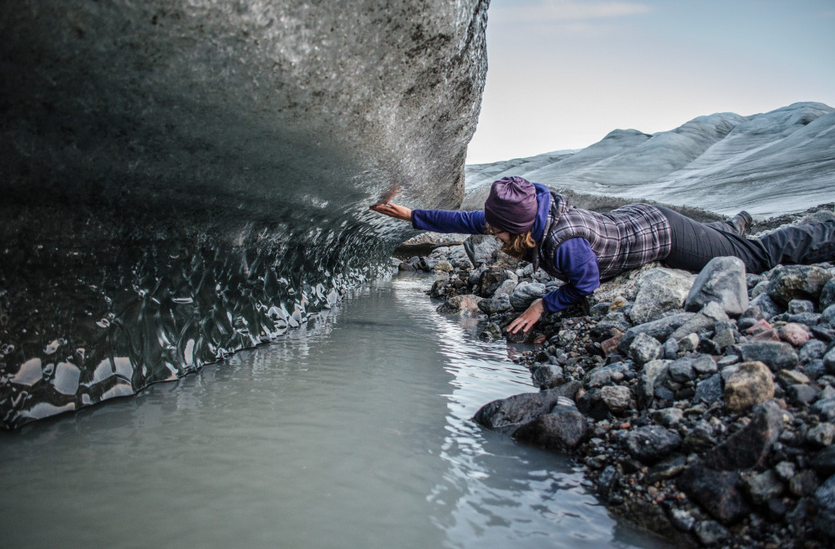
The geochemistry of dissolved and particulate weathering products is likely to vary as a function of the intensity and duration of weathering, and we believe we can exploit these variations to learn about the extent of continental ice sheets in the past and the timing of glacial advances and retreats. The glacial environment can be divided into three distinct weathering environments: the subglacial environment under the ice, the proglacial environment which is fed by meltwater from the ice sheet, and the deglaciated region in which the water driving weathering reactions is derived from seasonal rain and snow melt. Incongruent weathering has been shown to produce weathering solutions with more radiogenic Sr and Pb isotopes than the bedrock source material. In contrast, more extensive, more congruent weathering produces solutions with isotopic ratios similar to the bedrock.
We collected samples from a proglacial system in Greenland as well as two deglaciated regions with distinct annual rainfall patterns to test whether: 1) the proglacial systems produce dissolved ion concentrations and radiogenic isotope fluxes typical of incongruent weathering, while 2) the deglaciated systems produced dissolved ion concentrations and radiogenic isotope fluxes typical of more congruent weathering.
Based on these results we plan to move offshore to study paleoweathering conditions from deep sea sediments that provide longer-term, more continuous records. For these records we would compare 1) seawater Pb isotopes preserved in Fe-Mn oxide coatings, as a recorder of the composition of the weathering solution, and 2) detrital Pb isotopes as a recorder of the weathered bedrock composition. The goal is to study the offset between these two archives to determine variations in the proportion of glaciated and deglaciated regions through time.